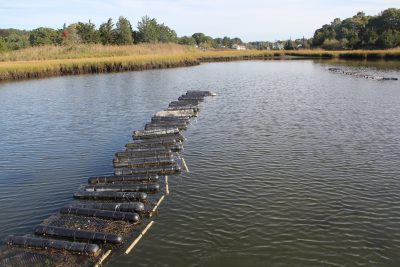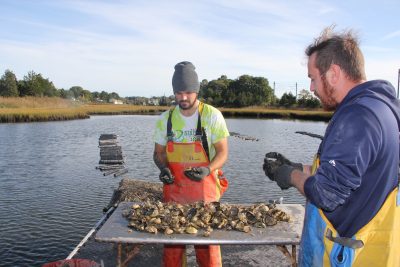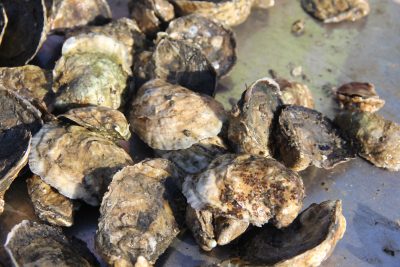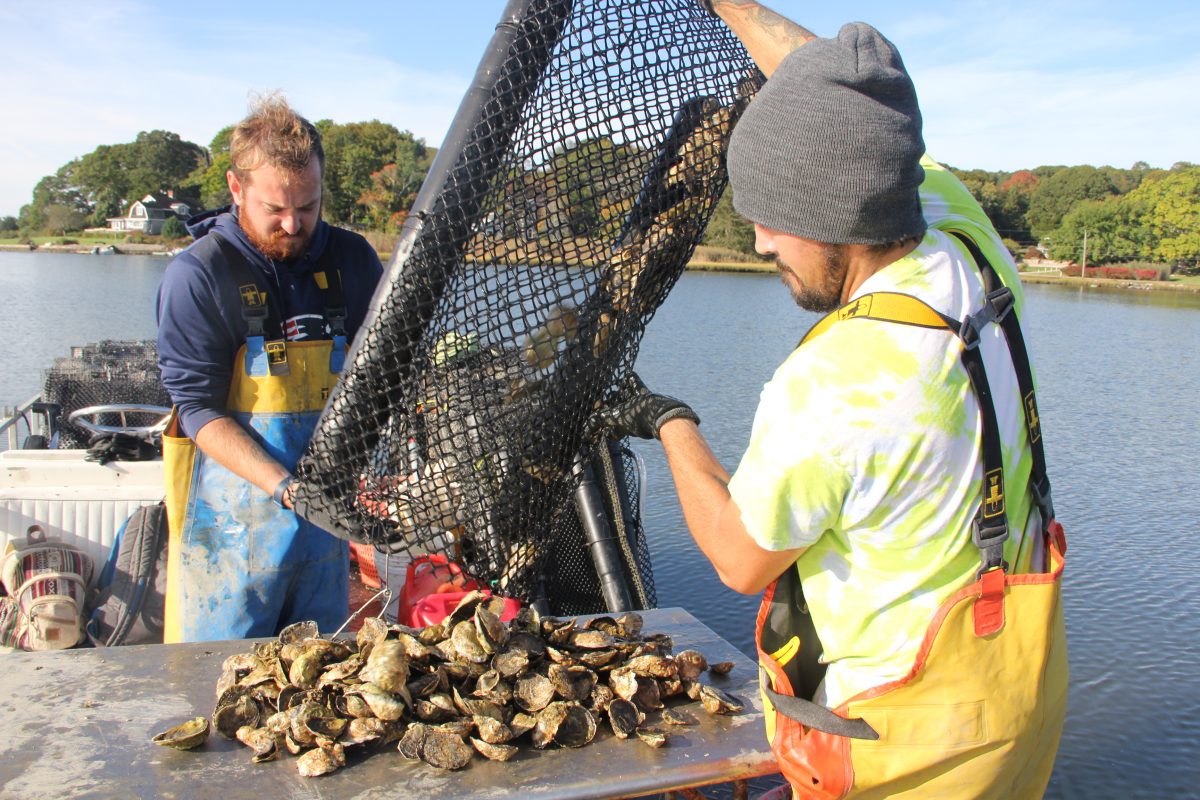
Story and photos by Judy Benson
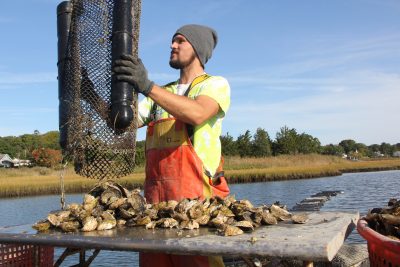
Oysters grow fast in Beebe Cove.
At least that’s the experience of two of Connecticut’s newest shellfish farmers, Will Ceddia and Jason Hamilton.
Thus far this year they’ve raised about 40,000 market-sized oysters in the Groton tidal pond and are hoping to increase that to 70,000 next year. Waters rich with the nutrients the oysters feed on, favorable tidal cycles and use of mesh bags suspended on long lines to house the shellfish have created the optimum conditions for their crop.
“Usually, it takes about 18 months for oysters to reach market size, but ours are getting there in under a year,” said Ceddia. “We know we have a slam-dunk area here, and the community has been so cool with us.”
During National Seafood Month this October, the partnership of Ceddia and Hamilton known as Sixpenny Oyster Farm—named after Sixpenny Island at the mouth of the cove—is one worth celebrating. The two young entrepreneurs have committed to making a significant contribution to the state’s $30 million-per-year shellfish industry by forging their own unique path.
“It’s such a pleasure to see new shellfish farmers making their way and building on the great foundation established by generations before them in our state,” said Tessa Getchis, aquaculture extension specialist for Connecticut Sea Grant. “Operating a new small business when markets and supply chains were essentially brought to a halt by the pandemic was no small feat for these farmers.”
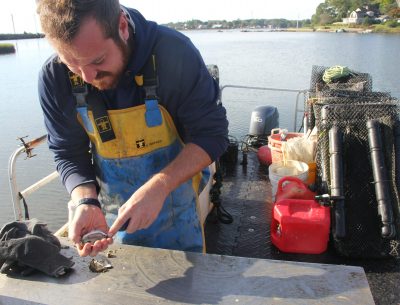
At ages 28 and 30 respectively, Ceddia and Hamilton are decades younger than most of the state’s other shellfish farmers, but every bit as eager to share their enthusiasm for their product.
“This is the first year that our business has really taken off,” said Hamilton. “For a while it was like a desk job, while we were doing all the work to get the permits.”
Now, months after the regulatory challenges have been met, the two get to spend most of their days like they did on Oct. 12, plying the gentle waters of the cove in their open-sided boat, pulling up bags of oysters to clean and sort the ones ready for market. Along the way, they might pry open a few oysters to check the meats, exchange waves with one of the three other oyster farmers in the cove or admire an egret fishing along the marshy shore.
“At the end of the day, we’re farmers and we just like being outside,” Ceddia added. “This is like summer camp every day.”
The two met in 2015 while working at the Fishers Island Oyster Farm, which they both credit for giving them the practical experience they needed to go on their own. In 2017, former Sixpenny Oyster Farm owner Sally McGee offered them the chance to co-manage the operation with her. A year later, McGee was ready to transition out of oyster farming, and Ceddia and Hamilton began working with regulators to acquire her leases. They now lease about 6.5 acres in Beebe Cove.
They started slowly, keeping their full-time jobs and working on the farm on Sundays through 2019 and into 2020. Then last summer, as pandemic restrictions eased and more outdoor events were happening, they got an offer from a local farm to sell their oysters on the half shell at an outdoor dinner. It proved to be a turning point in the trajectory of their business.
“It gave us the idea that we wouldn’t necessarily need to sell to restaurants,” Hamilton said.
They realized direct sales at breweries, outdoor dinners, weddings and other events would bring in more money and that they really enjoyed interacting with the customers.
“Now it’s what we do,” Hamilton said. “We go to breweries all over the state. We’re going to three breweries over the next three weekends.”
Often, customers will stop by as Ceddia and Hamilton are shucking oysters and ask, “Where did you catch them?”
That’s their cue to explain that oysters are farmed, and how they benefit the environment by filtering out excess nutrients.
“We’ve met so many cool people who say they came for the oysters, but left with an education,” Ceddia said.
